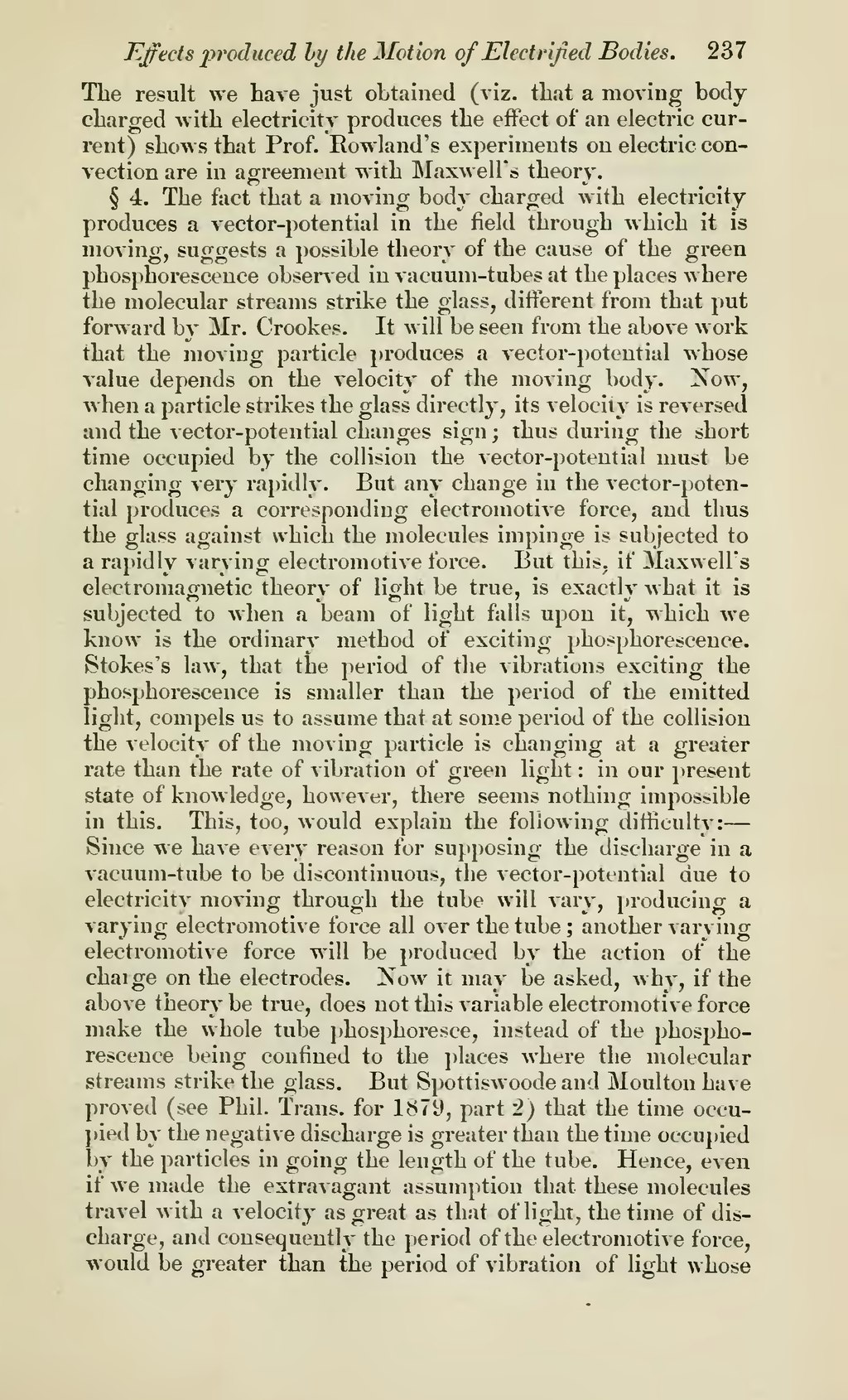The result we have just obtained (viz. that a moving body charged with electricity produces the effect of an electric current) shows that Prof. Rowland's experiments on electric convection are in agreement with Maxwell's theory.
§ 4. The fact that a moving body charged with electricity produces a vector-potential in the field through which it is moving, suggests a possible theory of the cause of the green phosphorescence observed in vacuum-tubes at the places where the molecular streams strike the glass, different from that put forward by Mr. Crookes. It will be seen from the above work that the moving particle produces a vector-potential whose value depends on the velocity of the moving body. Now, when a particle strikes the glass directly, its velocity is reversed and the vector-potential changes sign; thus during the short time occupied by the collision the vector-potential must be changing very rapidly. But any change in the vector-potential produces a corresponding electromotive force, and thus the glass against which the molecules impinge is subjected to a rapidly varying electromotive force. But this, if Maxwell's electromagnetic theory of light be true, is exactly what it is subjected to when a beam of light falls upon it, which we know is the ordinary method of exciting phosphorescence. Stokes's law, that the period of the vibrations exciting the phosphorescence is smaller than the period of the emitted light, compels us to assume that at some period of the collision the velocity of the moving particle is changing at a greater rate than the rate of vibration of green light: in our present state of knowledge, however, there seems nothing impossible in this. This, too, would explain the following difficulty: — Since we have every reason for supposing the discharge in a vacuum-tube to be discontinuous, the vector-potential due to electricity moving through the tube will vary, producing a varying electromotive force all over the tube; another varying electromotive force will be produced by the action of the charge on the electrodes. Now it may be asked, why, if the above theory be true, does not this variable electromotive force make the whole tube phosphoresce, instead of the phosphorescence being confined to the places where the molecular streams strike the glass. But Spottiswoode and Moulton have proved (see Phil. Trans, for 1879, part 2) that the time occupied by the negative discharge is greater than the time occupied by the particles in going the length of the tube. Hence, even if we made the extravagant assumption that these molecules travel with a velocity as great as that of light, the time of discharge, and consequently the period of the electromotive force, would be greater than the period of vibration of light whose
